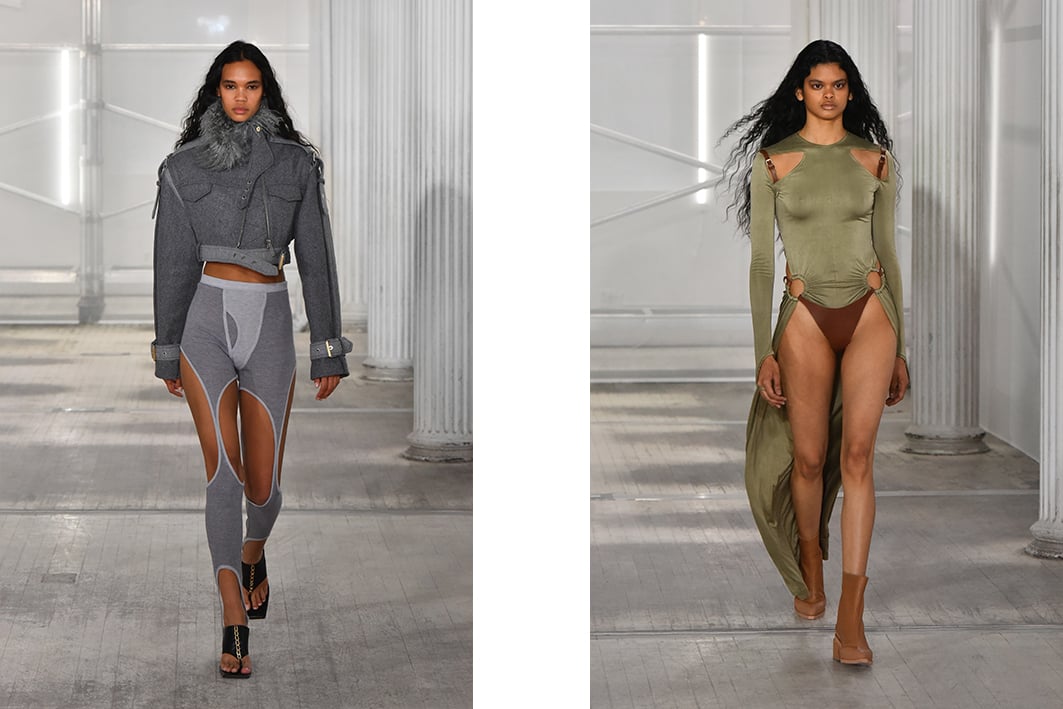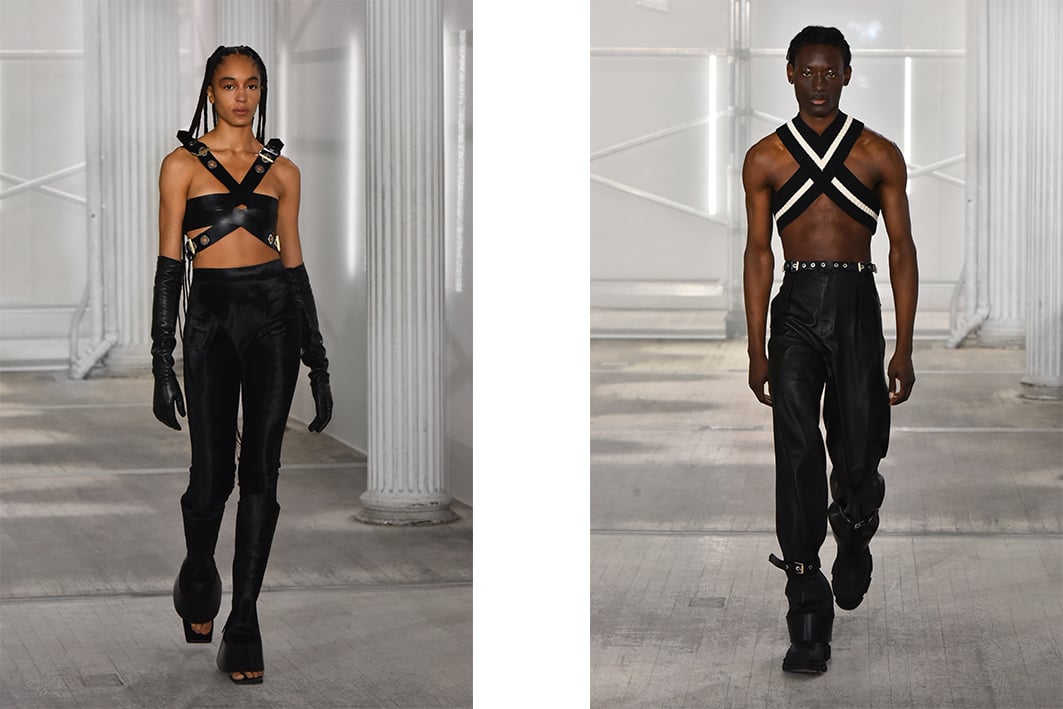
"The way I encourage people to use clothes is to amplify their own identity. And that's what I'm trying to encourage with the types of products that I design." Says Dion Lee. As the creative director of his eponymous, cult brand, his clothing is a direct reference to his experience, and Fall 21 is no exception. Coming off the back of a COVID-19 experience that was highly urban in New York City, the designer fled to Mexico to reconnect with his roots of coastal living, the result of which, was a reconnection to the brand DNA for Fall 21. Saddlery, tack, and a connection to form. These are the key elements, woven through Lee's signature industrialist silhouettes and utilitarian motifs that bind the collection together.
Buckles, leather, and harnesses, it's an equestrian fantasy driven forward by club-kid energy. If Spring 21 was a gentle whisper, Fall 21 hits you at maximum speed - a necessary approach when it comes to reiterating Lee's intent. Cocooned in architecture and subversion, it's Dion Lee's vision articulated exactly as he would wear it himself, which is precisely why it feels so exciting.
Below, we speak with Lee on his equine reverie, his new New York flagship, and how his process has changed with the COVID-19 landscape still hanging in the air.
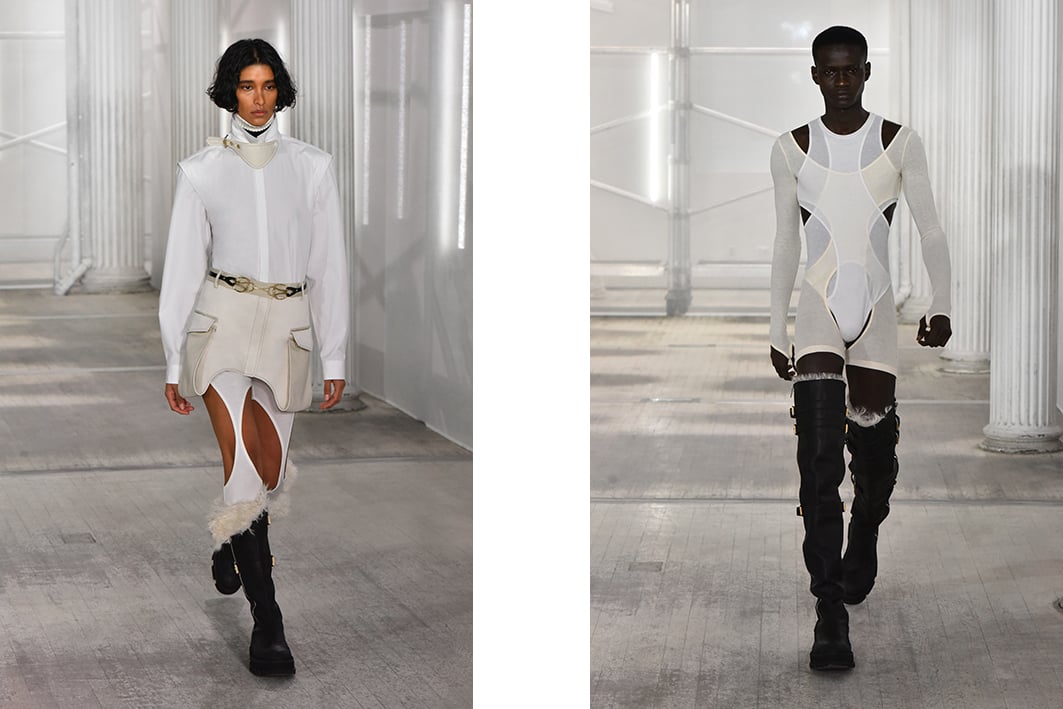
Can you talk about the inspiration for the collection?
There were a lot of abstract ideas, but the collection started with thinking more about a character and this kind of feeling of strength and empowerment that you get from dressing. Specifically, I was inspired by some equestrian saddlery and bridles and looking at the design and functionality of saddles, and integrating that language into many of the pieces in the collection.
Are you a horse boy? Do you have a personal connection to horses and tack?
I grew up riding horses. From an early age I remember riding horses. I wouldn't say that I'm the most confident rider, but it is an incredible feeling, being on an animal and having that very primal connection to an animal. In addition to riding horses, it was really the animal itself and that idea of silhouette that you get from a horse's body.
Where do you start when you're designing a collection, what's the groundwork?
There's often some image referencing, I often try and find that from outside of the world of fashion. So often, it's really thinking and things that give a strong sense of feeling or have an emotive or visual inspiration. I try and refine that into more of an overarching theme that can then be broken down into individual fabric groups.
Leather has been quite a constant for you for some time now, what does it represent for you and for the brand DNA?
The human body in general has always been a source of inspiration. But for me, leather is skin. It's the skin of an animal, and I love that relationship between human skin and leather. That second skin of the body. Recently, I've been working with different weights of leather. So the thickness of leather that we use is called Vachetta which is more sculptural leather. It's found in a lot of belts and bridles and saddlery. I love the more sculptural nature of that to create to create quite functional silhouettes.
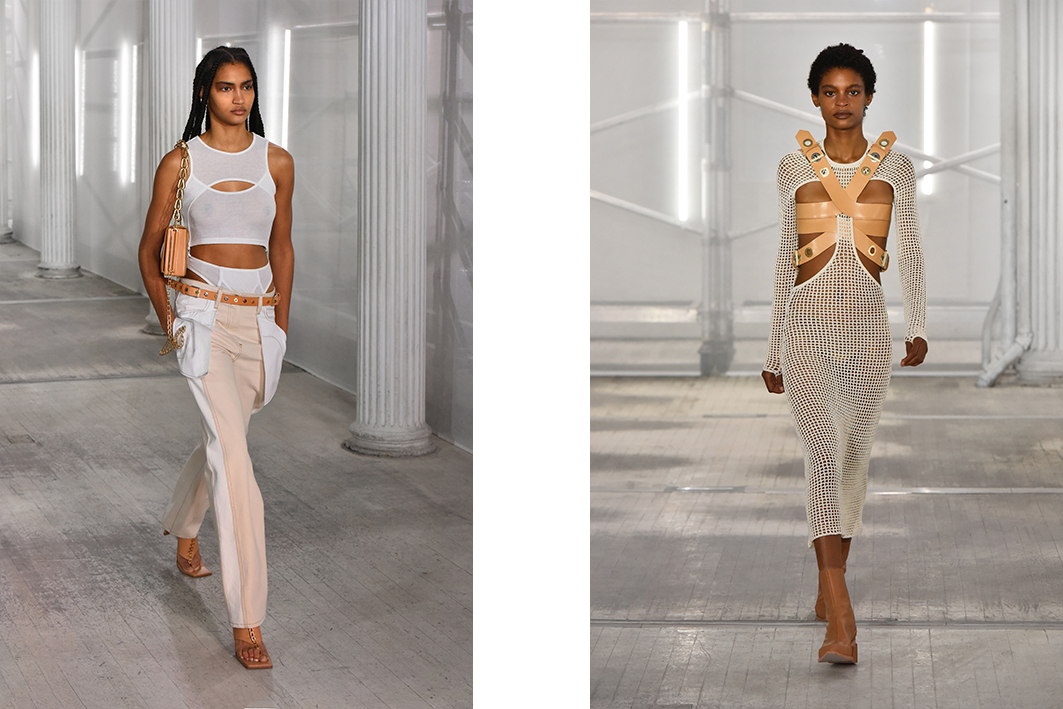
It feels like it's this continuation of motifs of industrialism that have been quite recognisable to the Dion Lee silhouette over the past years, is that underground, club kid wave that you've been riding, something that feels very integral to the brand now?
I would say it's more intuitive and subconscious for me, rather than something that I’m consciously trying to project into the clothes. I think it really comes down to how I wear clothes and how I connect with fashion personally. I think that approach is something that does come out as I design and as we fit the clothes on the body, it's more about how you wear them and how they feel to wear and I think that's kind of where it connects with culture. It is often those environments where you are dressing up that feel much more expressive and connective in a way.
So your connection to the clothing is rooted in expression and an exploration?
Yeah, definitely. And personal identity. I think the way I encourage people to use clothes is to amplify their own identity. And that's what I'm trying to encourage with the types of products that I design. Often, I don't want any collection to feel one dimensional in terms of the character that can wear it. Hopefully, there are many different people that will identify with different things, rather than feeling like it's all for the one person.
What's that journey with clothing been like for you growing up and how have clothes intersected with your identity?
I think for me, I go through waves where sometimes I'm so focused on designing clothes and I suppose looking at fashion every day that I kind of step away from it. And then there are other times where I feel more inspired, and I love the daily expression of putting a look together and styling in different ways. And I suppose challenging yourself. Often the people that you're attracted to are the ones that are pushing you a little bit or slightly outside of your comfort zone, but I think that's often what makes you find things attractive.
What has it felt like designing in the COVID-19 landscape in the past year?
From a brand perspective, I think there's a consciousness that occasion wear is not as top of mind for people. But I wouldn't necessarily agree with that completely. I think people still do want to dress up and there are still places to go. I think it's interesting, so much of what COVID-19 has been for me, has been still inspiring myself to dress and put a look together that maybe no one will see. But I think the dressing is for me, and I still want to feel and look the way that I do regardless of whether or not anyone else will. It's really connected me to dressing for myself.
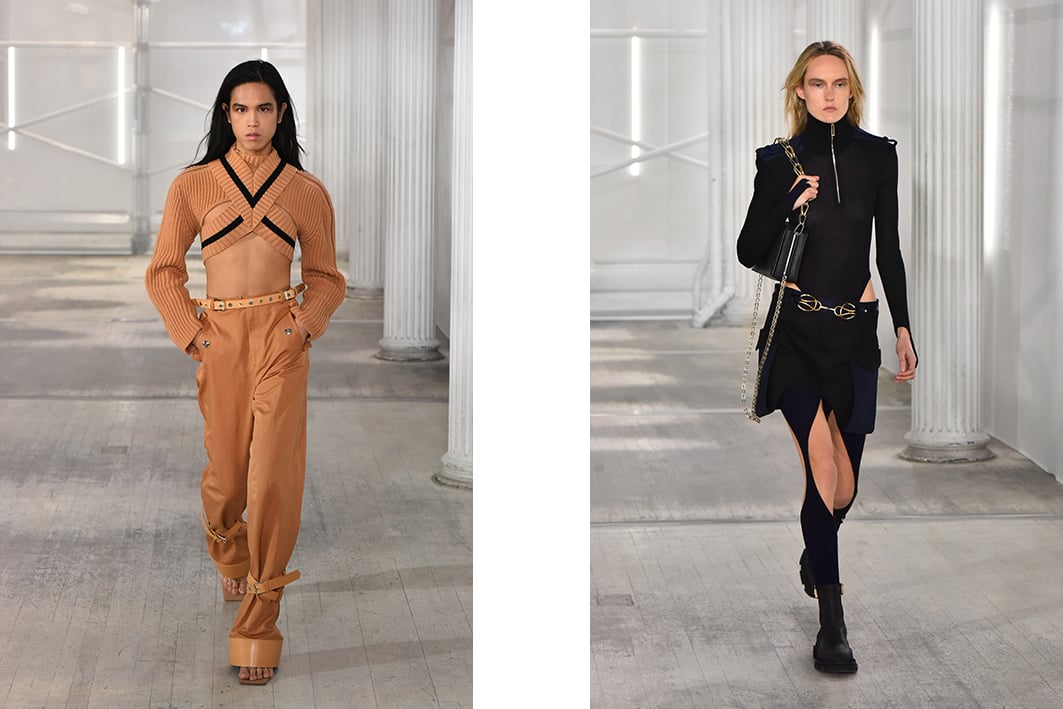
The collection this season feels very strong and purposeful. Last year it felt like it was more of an homage to the softness of nature. What was it that brought you back to a more utilitarian silhouette and approach?
I think for my Spring 21 collection, I was really experiencing craving for nature. And I was spending the majority of my time during COVID-19 in New York in such an urban environment and it really did have me thinking so much about being in a wild environment. And I think I was definitely feeling the cold and how your environment does really influence how you feel. That more organic language has always been something that I've connected with. But I think there was also progression from Spring into Fall. Definitely the language of crochet and the more hand worked textures within the collection were carried over. But I suppose there was something more assertive in the silhouette, and something slightly more rigorous that felt more in line with the direction for this season.
Did you end up getting your nature fix?
I have in ways. I spent quite a bit of time in Mexico in October and in December. I did spend quite a lot of time by the beach and exploring areas in Mexico that I've never spent much time in previously. And I think that did reconnect me with where I'm from, and growing up by the beach in Sydney. That that was such a big part of my life, and still is.
What’s pushed you to expand into footwear?
We launched our shoes over the past four seasons, and the offering has just continued to increase. We've definitely been building a strong relationship with boots and silhouettes that cover the leg. I think there is so much energy that you get from how clothes are grounded with a shoe. A shoe really does inform how you stand, how you walk and the silhouette of the clothes. I think more and more, I've moved my focus to explore the language of how the styling does really affect the clothes.
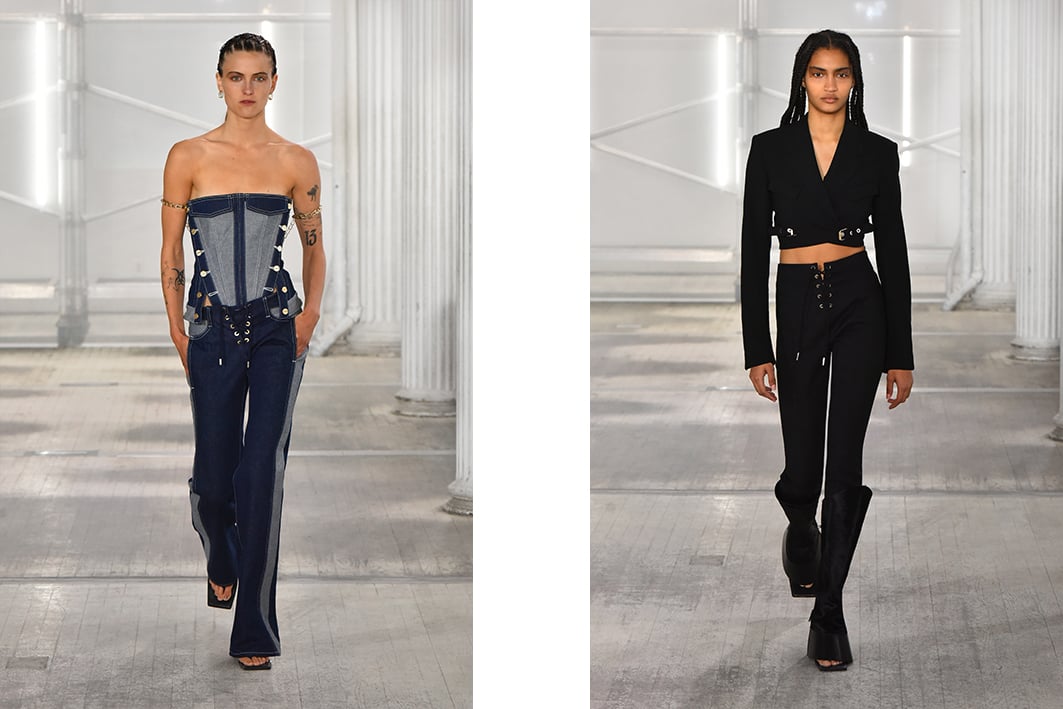
I know you are launching a new flagship soon in New York, and that you are quite interiors driven. What can we expect from the new space?
I think the new space kind of marks a new time for the evolution of the retail DNA. This will be my first store outside of Australia, and the first store we've opened in quite some time. It's a really important store for me in terms of design, and a project that's been in the works for many years now.
Since I moved to New York, I've always had the intention of having a store here and COVID-19 did slow that process down in a way. During the pandemic I was spending so much time in New York, I live very close to Soho, in Tribeca, and I would walk through Soho and look in the window of all of these empty stores and think about how it could be a really interesting opportunity to explore a space that may not have been available to me in a different retail landscape.
So I really did start to kind of think about what the proposition of retail really is, knowing that so much of our consumer behaviour has moved online. So it does make you question why brick and mortar retail is still important, and more than ever, I think, because people have spent so much time in quarantine and, and not engaging in public environments, It makes you super aware of both interactions and what luxury in store experience can feel like.
There's so much communication around a product, and so much detail around the design and manufacturing of each product that isn't always necessarily communicated online when you're buying something. But I also see a retail environment as an opportunity to really connect with all of the sensory elements of the brand. Music is such an important thing for me, being able to really curate the sound within an environment. Lighting design is so important in terms of how you experience something and how you draw someone's focus. Everything about an environment can really impact how you experience something.
Our current issue theme is Freedom. When do you feel most free?
I feel most free when I'm expressing myself and I'm inspiring myself and working with people that inspire me. When I feel like I'm doing something that's honest, and I'm being myself and seeing people connect with that.
